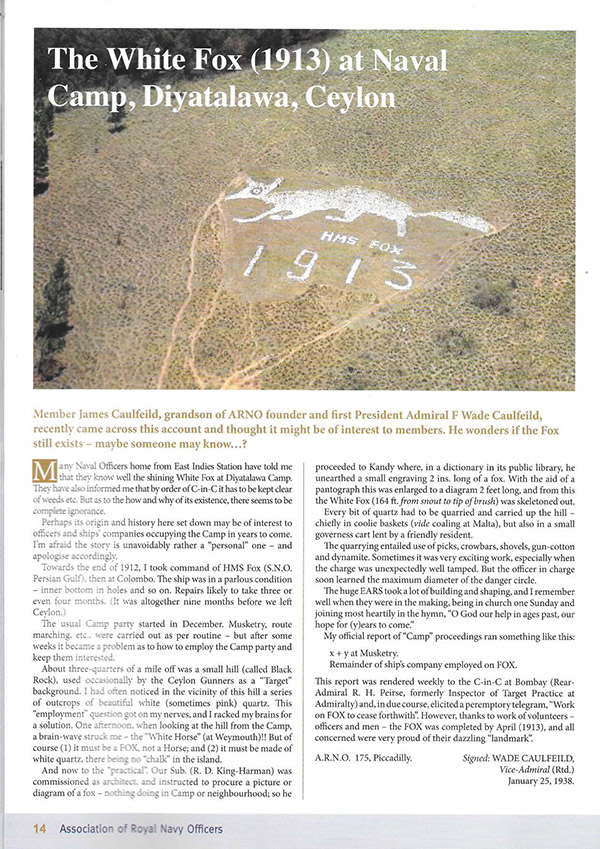
Amidst The Plains Of Diyatalawa
June 2013
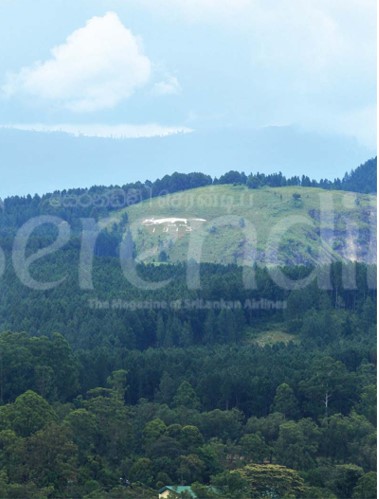
Fox Hill with the insignia of the fox, HMS Fox and the year 1913 etched in white granite
Winding through the road lined with many a tall tree we slowly inched towards Diyatalawa. The cool clime and the trickle of sunlight that at times dappled the way unveiled an enchanting landscape. By and by trees gave way to a bustling town and here we began our journey to discover the history and the present of Diyatalawa…
Words Krishani Peiris Photography Menaka Aravinda
Located approximately 1,331 metres above sea level, Diyatalawa in the Haputale District is well known as a Garrison Town. Though it is not clear as to when the place became a prominent threshold for armed forces, historical records show that in 1885, the British had stationed a garrison in the area. And from that point onwards, Diyatalawa has being able to carve its own niche in the history of Sri Lanka.
Then Diyatalawa, meaning The Watered Plain, was at one point a bare plain where shrubs and elephants roamed freely. It is believed that British planters and hunters had come to the area in search of game, resulting in the extinction of elephants in the region. Moreover, towards the latter part of the 18th Century Wesleyan missionaries, Reverend Samuel Langdon with his wife, leased the land and set up an orphanage and a school naming the area ‘Happy Valley’. This was later removed to make room for the Boer war prisoners.
Annals of history surrounding the area revolve around the prisoners of the Boer war, in Africa, who were imprisoned in the locality. Boers, in Dutch for farmers, mainly consisted of Dutch descendants that had come to Cape Town, Africa in the 1600s when the Dutch East India Company operated in the region. They made a home for themselves in Cape Town – as the rich and powerful – driving away or enslaving the natives to gain full advantage of the city which was located in the naval navigation route from Amsterdam to South Asia. As the voyage between the countries took almost three months, breaking the journey half way to get provisions was customary and Cape Town proved to be a pivotal city where they were able to gain many riches.
When the British arrived in Africa they sought to take this wealth and to take control of the trade route centering Cape Town, leading to bitter struggles against the British hierarchy. After two successive wars, in 1877 and 1899, many of the Boers were shipped as prisoners to other colonies of the British Empire. As such Diyatalawa was chosen as a place to hold the prisoners and a camp was built in 1900, to house 2,500 prisoners and 1,000 guards. However, more additions were made as the number of prisoners increased to more than 5,000. For the next few years, until 1902 when most of the prisoners were released, the camp was their home where they toiled in building roads among many other tasks.
With the Independence and the formation of the Ceylon Army in October 10, 1949 the area was established as a training centre for the Sri Lanka Army. Hued In Green, These Abodes Offered A Glimpse Of The Way Of Life some 100 years.
Back Now, Today Diyatalawa is home to the Sri Lanka Military Academy, Sri Lanka Air Force, Institute of Surveying and Mapping and a small thriving town. As we passed the town teeming with many shops, vehicles and people, it depicted a vibrant setting.
At the Institute of Surveying and Mapping we took time to observe the structures made out of tin sheets. Hued in green and numbered, these were the abodes of the prisoners and offered a glimpse of the way of life some 100 years back.
The Sri Lanka Military Academy (SLMA), the training centre for officers as well as other personnel, covered a magnificent expanse that sprawled along acres of beautiful land. In order to admire this beauty better, we stopped by the Halangode Lake, which was rumoured to have been a treasure trove for precious gems some years back. The green waters that reflected the overhead skies as well as the lush greenery that lined the sides enhanced the charm surrounding the area.
Fox Hill where an image of a fox with HMS Fox and the year 1913 etched in white granite on a green backdrop, stands as a landmark that could be seen from various points in Diyatalawa. It is said that HMS Fox (His Majesty’s Ship), an old vessel – utilized to convey the Boer war prisoners to Sri Lanka – that was anchored in the Trincomalee Port due to repairs, was the inspiration behind this insignia. Situated nearby to this hill is the Fox Hill racing track, an idea by Hans Ralf – a German national – and made a reality by the Army in 1993. Fox Hill super-cross usually held in April, is one of the most prominent car and bike races in Sri Lanka and attracts nearly 75,000 visitors or more. The most unique feature of the track is that spectators can witness the races up close as the elevated grand stand provides a view of the whole track.
Enjoying the gentle breeze, which imparted a breath of fresh air along with the picturesque landscape dotted with varying shades of foliage, we paused at a monument built in 1913 to commemorate the Boer War Prisoners. The monument decorated with a cross atop and faded with age had names inscribed along three sides. Soon our gaze was drawn to another monument nearby paying homage to the soldiers who have contributed during World War I and II. Subsequently at the Polo Grounds, we revelled in the sheer breadth of a natural field that stretched as far as the eye could see. Maintained by the SLMA it is utilized for golf, rugby, football and more.
As we explored Diyatalawa we did not forget to visit the railway station, which is believed to have been built somewhere between 1892 and 1893. Though the building and the tracks were renovated through the years, two iron bars used for a cable car, used in the early 1900s, still stood there. In addition, stories about a little pub being located in the vicinity and of how one of the tunnels nearby was built, provide exciting anecdotes. As we stood there scrutinizing the neatly manicured lawns fringing the tracks and the scenic panorama beyond, a train from Kandy to Badulla approached the station, stopping for a while, as some people stepped out.
Bidding adieu to this serene land we wound our way out of the town as the skies started to darken and released drops of rain. A merging of the old and the new, Diyatalawa carried a wealth of history and scenery to sate the eye and the mind of the curious traveller.
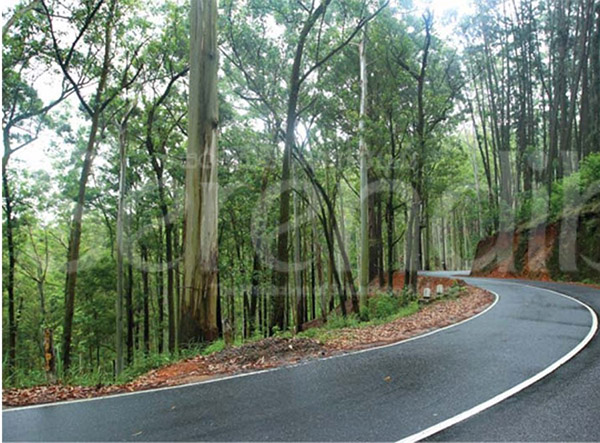
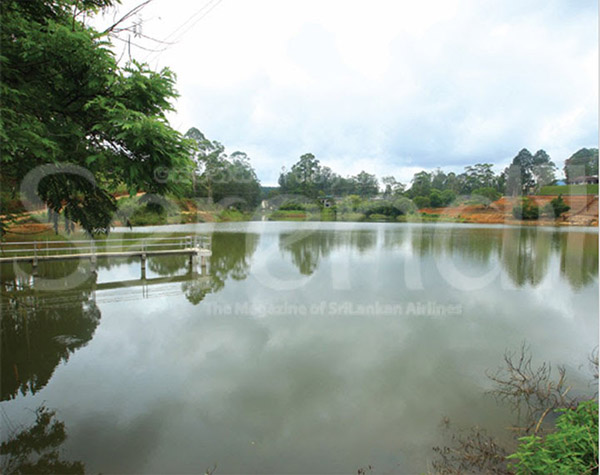
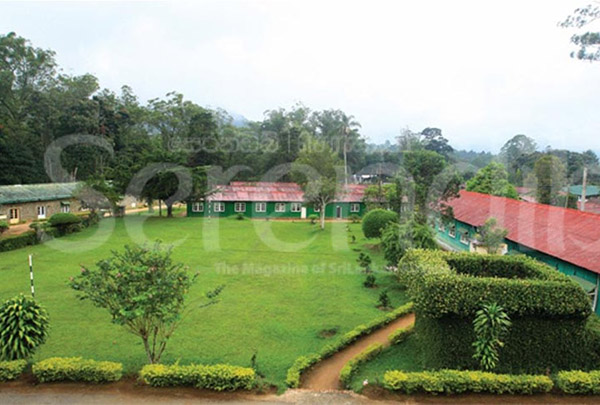
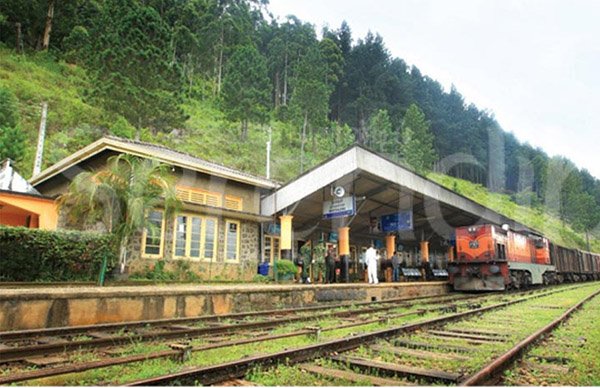
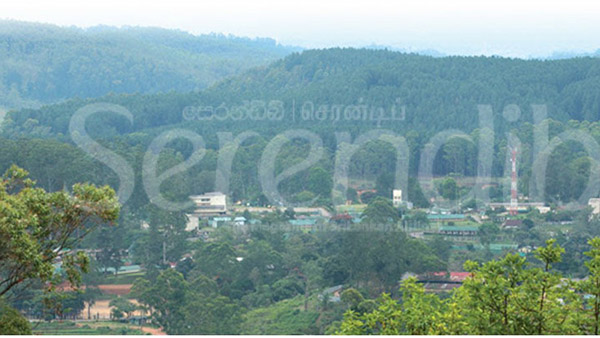
Diyatalawa: The Watered Valley
The garrison town of Diyatalawa is, as its name denotes, a ‘watered valley,’ nestled between Haputale and Bandarawela, in the central highlands of Sri Lanka. Less known than Nuwara Eliya and Kandy, this eucalyptus and pine encrusted hill station has been associated with the military for almost a century. It is perhaps for this reason that the average Sri Lankan (with no military background) has little to no knowledge of it. But we hope to change this, because it is a pity to leave such a quaint location unexplored, at least in our national imagination.
To many who have been there, Diyatalawa has proved itself to be an ideal off-the-beaten-track holiday destination. There is no record of there being any kings or queens or important battles won or lost in Diyatalawa. To some, this makes Diyatalawa seem uninteresting, and non-existent, from a historical point of view. But to others, this is precisely what makes the little town and the few tidbits of information there is on it all the more intriguing.
Diyatalawa, the watered valley.
Happy Valley
Perhaps the oldest piece of writing on Diyatalawa is a book by the name of The Happy Valley: Our New ‘Mission Garden’ in UVA, Ceylon, by Rev. Samuel Langdon, a member of the Royal Asiatic Society, Ceylon. Rev. and Mrs. Langdon were two Wesleyan (Methodist) missionaries, with a story of their own, which we feel is worth touching on here.
Rev. Langdon first arrived in Ceylon in 1870. He began his mission as a teacher at Wesley College, Colombo, and was later entrusted with the responsibility of steering Richmond College, Galle, as its Principal, through its initial years of development. The Langdons were also instrumental in setting up Girls’ High School, Kandy.
Rev. Langdon is said to have earned a reputation for establishing “science education” across Ceylon. Articles in the Sathyalankaravaya newspaper, dated March 13, 1878, and March 26, 1879, indicate the high esteem in which he was held amongst education circles at the time. In fact, in 1976 a Richmond College science magazine by the name of Vidya Thilina described Rev. Langdon as a “pioneer of science education in Sri Lanka.”
It would seem that Rev. Langdon’s passion for science grew alongside his calling as a missionary. Having a heart for serving people, upon retirement from the office of Principal of Richmond College in 1879, Rev. and Mrs. Langdon leased a piece of land from the Colonial Government and set up an orphanage and an industrial school. The location they picked to do this was none other than Diyatalawa, which became to them ‘Happy Valley.’ The Langdons’ Happy Valley mission station included – apart from the orphanage and industrial school – a mission house, a hospital, and a chapel.
With the establishment of the Happy Valley mission, the rolling hills of Diyatalawa, which were largely uninhabited until then, began to slowly develop into a quaint settlement. In time, quiet tea plantations were established in the vicinity, and more plots of Colonial Government-held land surrounding it were given on lease to various parties wishing to set up holiday homes in the hills.
Prisoners Of War
Happy Valley soon became an attractive little settlement – so attractive that in April 1900, soon after the British went to war with the Boers (i.e. South Africans of Dutch, German, or Huguenot descent, now known as Afrikaners), Rev. Langdon and his mission were asked to move out so that the Colonial Government could set up a Prisoner of War (POW) camp on the mission site. This aspect of Diyatalawa’s history is featured in R. L. Brohier’s The Boers Prisoner of War, found in Volumes XXXVI of 1946 and XXXVII of 1947 of the Journal of the Dutch Burgher Union (JDBU). In Volume XXXVI of 1946 of the JDBU, R. L. Brohier confirms that the “…pioneer effort of Missionary enterprise was consequently the inspiration which invested Diyatalawa with a fame and prominence few could have anticipated for it.”
R.L. Brohier goes on to state that, “Barely three weeks [after the Langdons were asked to vacate Happy Valley]… There followed the most remarkable exhibition of what organised local labour can accomplish…” The development that is recorded as having taken place was phenomenal. It is stated that “All day, and even into the night, the valley throbbed to the toil of builders and engineers. Labourers in gangs of hundreds, a large proportion of them being women, moved to and fro carrying earth to hand-carts that passed up and down a network of roadways.” Arc and flare lamps are said to have been provided to light up the barriers at night, and electric lights had been provided to all the military and staff buildings. There was even an aerial tramway that was set up to run on “Eiffel Tower like structures” for conveying stores. A road was also constructed from the railway station to the camp. Within as short a time as ten weeks, “… as if by a miracle, what but a while ago was a bleak patana punctured by a few straggling buildings, materialised into a veritable town of silver sheen…”
The first batch of Boer POWs landed in Colombo on August 9, 1900, from aboard the Mohawk, while further batches of POWs arrived on the island from time to time until June 1901. It is said that the POW camp in Diyatalawa, originally planned to accommodate 2,500 POWs and a guard of 1,000 men, ended up having to hold 4,735 POWs out of a total of 5,089 POWs who were brought and interned in Ceylon.
Boer POW camp.
R.L. Brohier speculates that despite Diyatalawa being a POW camp, the POWs impression (and, we hope, experience) of it may have been less than forlorn: “…who can venture to doubt that [when the POWs first stepped out of the train to Diyatalawa] it must have been with a shock of delight that they beheld in that vast panoramic landscape many of the characteristics of their own country. Here indeed were… mountains as rugged and as full of cover as their own—South Africa all over again” and that “Surely… nothing was wanting in this choice of a locality to alleviate the lot of the Boer who had to be kept under restraint in Ceylon.” Based on this speculation, perhaps we may imagine that the legacy of Happy Valley lingered even in the POW camp.
In any event, after the Boer War ended in 1902, the POWs were sent back to South Africa, and Diyatalawa became somewhat of a ghost town.
From Ghost Town To Garrison Town
Bearing in mind the salubrious climate of Diyatalawa, the Governor at the time, Sir West Ridgeway, authorised the abandoned camp ‒ which was by this time fitted out with a first class broad gauge railway, ideal for the movement of troops at short notice ‒ to be used as a Rest and Recreation Camp for the military, an encampment for the Ceylon Volunteers (later Ceylon Defense Force), and for the Ceylon Survey Department. In the mid-1940s, ‘Thistle Camp’ was set up, and it is said that during World War II, Italian internees were accommodated at Diyatalawa. After Independence from the British, the Ceylon Army Recruit Training Depot (later called the Army Training Centre, now known as the Sri Lanka Military Academy) was established in Diyatalawa. The Air Force Cadet Training School was also moved to Diyatalawa in 1952. The establishment of a permanent military presence in Diyatalawa resulted in it being gradually transformed from a POW camp into the fully fledged garrison town it is today.
Despite the development, however, there is still plenty of ‘old world charm’ in Diyatalawa. For example, the hill on which today’s Sri Lanka Military Academy stands is ‘Thistle Hill,’ which was part of the landscape of Thistle Camp. It is said that Thistle Hill got its name from the insignia it bore of HMS Thistle, a Royal Navy vessel. Although the camp is no longer called Thistle Camp, and the insignia is no more to be seen on the hill, a beautiful bungalow by the name of ‘Thistle House’ still stands there. It is surrounded by an impeccable English style garden, bearing witness to a bygone era. Thistle House was designed in the early 1950s by Mrs. Reid (wife of the then Commander of the Ceylon Army) who was an architect by profession. The house served, until quite recently, as the holiday bungalow for both past and present Army Commanders.
Another beautiful old bungalow, though not quite as grand, is one called ‘Steps.’ Built in 1905 by the Royal Navy, Steps has served for almost 50 years as home to the Commandants of the Army Training Centre/Sri Lanka Military Academy, and has, as such, been a silent partner to the officers who have shaped the history of the Academy.
Other notable buildings in the military camp itself include the Gemunu Watch Officers’ Mess (formerly ‘Rangala Camp’ of the Navy), the old Diyatalawa Army Station Officers Mess, and Elle Camp.
Must-See Sites
Now that you have some background, if you ever do visit Diyatalawa, there are a number of must-see sites in and around it that you should not pass ignorantly by. We must warn you, however, that some of these are simple, almost easy to miss sites, which you would not be able to spot or appreciate without having understood their historic significance.
- The Boer Cemetery:
Of the sites in and around Diyatalawa, the Boer Cemetery is the most relevant to Diyatalawa’s Boer War history. A total of 141 Boer POWs are said to have died in the POW Camp between 1900 and 1902, and they, along with the British servicemen who died during the same period, are said to be buried in the Boer Cemetery, on Boer Road, next to the present rifle range in Diyatalawa. Sadly, however, the Boer Cemetery is not maintained (unlike all the Commonwealth cemeteries) by the Commonwealth War Graves Commission. Therefore there is, unfortunately, very little left of the Boer Cemetery in Diyatalawa. In its day, each grave is said to have been marked with a wooden Celtic cross. Today all that stands is a (heavily run down) monument built in 1918 with the inscription, “In memory of the Prisoners of War who died at Diyatalawa Camp who were buried near this stone. Erected by the Government of United South Africa, 1918.”
The Boer cemetery. Image credit: Rukshani Weerasooriya Wijemanne
- Fox Hill
Fox Hill is possibly the only site in Diyatalawa known to Sri Lankans outside the military fraternity. It gets its name from the insignia of a fox and the letters and numbers ‘HMS Fox 1913’ made from white granite being placed against its sprawling green slopes. While it is commonly (albeit mistakenly) held that this insignia was put in place by the Boer POWs, it is more accurate to consider it possible that the insignia was the work of sailors who arrived in Ceylon in 1913 aboard the Royal Navy vessel HMS Fox, which captured two German merchant ships off Colombo in 1914.
Fox Hill. Image credit: Rukshani Weerasooriya Wijemanne
In any event, Fox Hill’s present significance is that it is the central feature of the motor racing track that has been built adjacent to it, where the famous ‘Fox Hill Supercross’ races take place every April.
The Fox Hill Supercross is held in Diyatalawa every April. Image
- One Tree Hill
No, this has nothing to do with the TV series. One Tree Hill is a small mound of earth, crowned with a single tree of the Banyan family, located close to Fox Hill. This tree is estimated to have been planted around the turn of the last century, and the little hill, which is 4,298 feet above sea level, was referred to as “One-Tree Hill” on a map of Ceylon printed in 1941, for which a survey had been carried out in 1917. The tree has been specially treated since the year 2000 in order to conserve it for its historic significance.
One Tree Hill. Image credit – Rukshani Weerasooriya Wijemanne
- Adisham Monastery
Built in 1931, Adisham Hall (now Adisham Monastery) is just 11.8 kilometres from Diyatalawa. Adisham Monastery was a house which once belonged to the British aristocrat and tea planter, Sir Thomas Lester Villiers (former Chairman of George Steuart Co.). Sir Thomas was a grandson of Lord John Russell and a descendant of the Dukes of Bedford.
The Adisham Monastery.
Named after a village and civil parish in the English county of Kent, Adisham was designed in Tudor and Jacobean style. It is said to have played host to many prominent personalities of the colony until the retirement of Sir Thomas. Afterwards, it was sold to Sedawatte Mills and later purchased by the Roman Catholic Church and converted into the Benedictine monastery it is today. The English country-cottage style gardens and the original Adisham Hall are open to visitors from 9:00 a.m. to 12:30 p.m. and 1:30 p.m. to 4:30 p.m. on weekends and school holidays.
Significantly, Adisham is one of only 18 monasteries in the world belonging to the Sylvestrine Congregation, a sub-order of the Benedictine fraternity, founded in the 13th Century.
Off to one side of the beautiful monastery, where we imagine Sir Thomas stabled his horses, you will find a small shop selling chutneys, jams, cordials, and fresh strawberries, produced from the orchards around the monastery.
- Mythical waterfalls
If you do venture as far out as Diyatalawa, you are closer than you think to two of the most beautiful waterfalls on the island. Just a half hour’s drive from Diyatalawa town is Diyaluma Falls, the second highest waterfall in Sri Lanka, ranked 361 in the world.
Diyaluma Falls.
At 220m high, “Diyaluma” means “liquid light.” According to Sri Lankan folklore, this is where a young chieftain, who, wanting to be with the woman he loved, and had been banished from the kingdom, tragically lost his love in an attempt to haul her up over the escarpment. The gods were said to have been so moved by the spectacle that they caused a stream of water to gush from the mountain to veil all evidence of the tragedy. The beautiful waterfall is totally worth a visit.
Similarly, an hour’s drive on the Badulla road from Diyatalawa will take you to Ravana Falls ‒ one of the widest waterfalls on the island. The falls are named after the mythical King Ravana featured in the Ramayana. Legend has it that King Ravana had hidden the Indian Princess Sita (whom he had kidnapped) in the caves behind this waterfall.
So there you have it ‒ at least five breathtaking reasons to hop on a train to Diyatalawa the next chance you get – even if the only time your family or friends will agree to go with you is in April, for the Fox Hill Supercross Races. When you do venture out, which we hope you will, be sure to steal away from the crowd, at least for a minute or two, to sit quietly and soak in the stories written all over those beautiful hills.
[Sources include R. L. Brohier’s ‘The Boers Prisoner of War,’ found in Volumes XXXVI of 1946 and XXXVII of 1947 of the Journal of the Dutch Burgher Union; Air Vice Marshal A. B. Sosa’s ‘History of the Sri Lanka Air Force Diyatalawa and the Regiment’ (2016); Captain K. A. S. N. Senaratne’s Article in the booklet published for the 50th anniversary of the Gemunu Watch (2012)].






